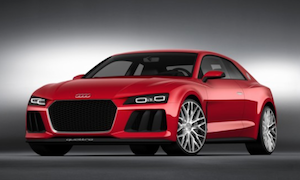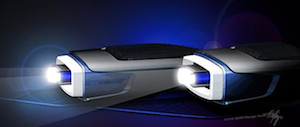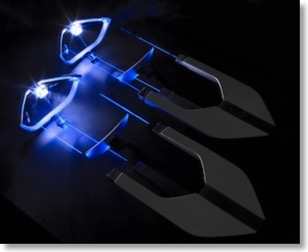Home
A comprehensive resource for safe and responsible laser use
US: No laser beam headlights for U.S. cars -- not without rule changes
Toyota has filed a petition with the National Highway Traffic Safety Administration, seeking to allow the advanced headlights.
A story in Ars Technica goes into more detail about how the laser headlights work, and how companies are advocating for “sensible policy solutions where the tech and car worlds intersect.”
From a June 5 2014 Ars Technica article by Jonathan M. Gitlin
Note from LaserPointerSafety.com: Although automobile headlights are not laser pointers, they do use diodes similar or identical to those in high-powered blue lasers such as the multi-watt Wicked Lasers S3 Arctic handheld. In headlights, laser diodes are used to energize a phosphor coating so that incoherent bright white light is emitted. The small diodes allow the headlight assembly to be lower-profile, giving more flexibility in body design and aerodynamics. They also allow beam shaping to avoiding dazzling other drivers, and aiming the beam in the direction of travel while turning. Our coverage of laser headlights (other stories) can be found here.
Worldwide: Audi introduces laser headlights; follows BMW's lead

Audi Sport Quattro concept car
BMW also has introduced laser headlights, on its electric supercar i8.
The headlights use laser diodes to energize a phosphor that creates white light. According to Audi, the beams have a range of 1640 feet, twice the distance of LED high beams.
Technically, the white-light beam would not have the same coherence as a laser, making it safer for human vision (at least, at normal driving distances -- any very bright light viewed up close could be an eye hazard). An Audi spokesperson said “Our main aim was to not dazzle any drivers, laser technology is much more accurate.”
Because the laser diodes are so tiny -- only a few micrometers in diameter -- the headlight assembly itself can be made smaller as well.

Closeup of the Audi laser headlights
The laser power appears to be about 10 watts, based on an Australian report that “the system is 10,000 times more powerful than a laser pointer”. Such pointers in Australia are limited to 1 milliwatt or 1/1000 watt. It is unclear if this refers to the total power of both headlights, or of a single headlight.
From Car and Driver, and News.com.au. MotorTrend has an excellent article from 2011 describing in detail how the BMW laser headlights work. It contains an account where journalists looked directly into the light without adverse effect.
Germany: BMW shows safety features of its new laser headlights
Each of the four headlights uses three blue lasers. The lasers are directed by mirrors onto a lens containing yellow phosphorus. This re-emits white light onto a larger mirror that reflects it out the headlight glass onto the road.

Two of the four laser headlights are shown here. The resulting white light beam is emitted toward the upper left of the photo.
The system is 1000 times brighter than LED headlights, uses half the power, lasts just as long (10,000 hours) and allows more flexible designs. BMW noted that light emitted from the headlights is not laser light, and is safe to stare into. In case of an accident, the headlights are powered down so no laser light could escape.
[Note from LaserPointerSafety.com: It is likely that the laser diodes in the headlight are the same type used in Casio’s Green Slim projectors and the Wicked Laser Spyder III Arctic handheld laser. These are relatively inexpensive -- less than $30 each in quantity -- and produce a nominal 1 watt of light.]
From Motor Trend